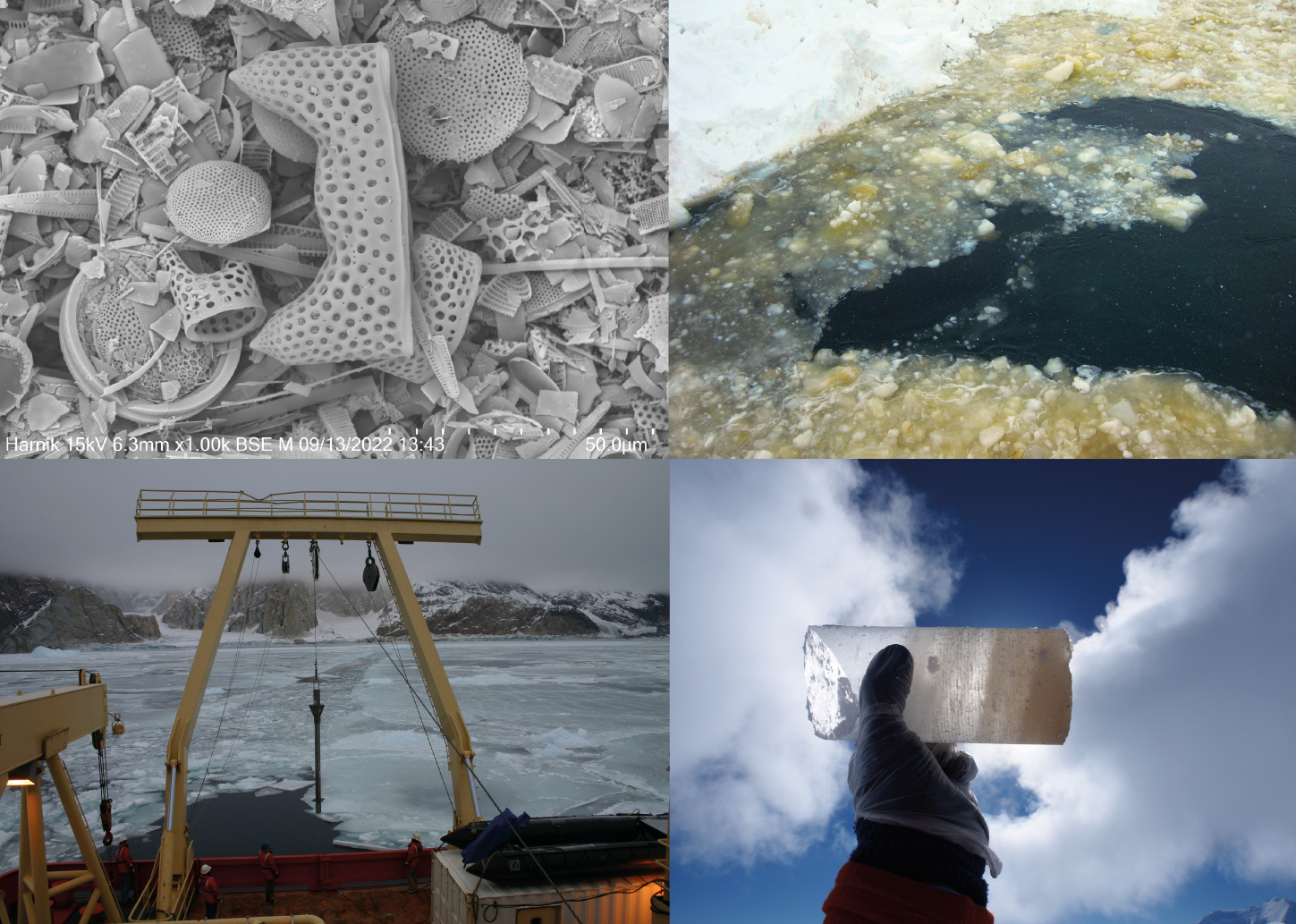- Home
- Publications
- PAGES Magazine
- Editorial: Sea Ice In The Polar Regions
Editorial: Sea ice in the polar regions
Chadwick M, Kohfeld KE, Leventer A, Pieńkowski A & Zimmermann H
Past Global Changes Magazine
30(2)
69
2022
This special volume highlights advances in sea-ice reconstruction and reflects the efforts of two PAGES working groups: Arctic Cryosphere Change and Coastal Marine Ecosystems (ACME; pastglobalchanges.org/acme) and Cycles of Sea-Ice Dynamics in the Earth System (C-SIDE; pastglobalchanges.org/c-side). This joint effort recognizes the large-scale and rapid changes happening in the high latitude oceans, where changes in sea-ice extent are central to a wide range of cascading and interconnected impacts. Both working groups address paleo sea-ice reconstruction as a tool for understanding broad ecosystem changes that have occurred in the past. This research provides a longer-term perspective on modern changes, and these data can be used to constrain models used to understand today's evolving cryosphere. Our articles are dedicated to overviewing the proxies we have to reconstruct past sea-ice conditions, their different use between the Northern and Southern hemispheres, and across different timescales.
This volume starts with articles highlighting recent changes in sea-ice distribution and extent in the Arctic and Antarctic with satellite-based data by Meier (p. 70), illustrating the differences in change at the two poles. Wilson et al. (p. 72) focus on a Sikumiut community-based sea-ice monitoring program that highlights the important contributions of historical knowledge from an Inuit community directly facing changes that impact safe travel over the sea ice. Fogt et al. (p. 74) compare satellite-based data with ice-core-based paleo reconstructions from the past century to address regional differences in Antarctic sea-ice extent, and investigate the teleconnections and forcings responsible for spatial variability in recent trends. Tedesco and Post (p. 76) describe polar marine ecosystems associated with sea ice; understanding these modern systems is fundamental to the application of proxies to reconstruct past sea ice.
Reconstructing sea ice further back in time requires advances in novel proxies and more traditional and established proxies. Armbrecht (p. 78) and Harðardóttir (p. 80) present the state of knowledge in using ancient DNA in Antarctic and Arctic marine sediments, respectively, to track taxa through time; this promising and versatile toolkit offers new ways to identify and quantify sea-ice species, and to reconstruct ecosystems in regions where most taxa do not have hard parts preserved. Similarly, McClymont et al. (p. 82) propose the use of snow petrel stomach-oil deposits as a new proxy for sea ice in Antarctica, based on their foraging habits; the authors' data, extending to the last glacial period, indicates the role that coastal polynyas may have played as refugia during a time of expanded sea-ice extent. Finally, Nixon (p. 84) reviews the use of geomorphic characteristics of raised beaches, and the cautious interpretation of the presence of whale bones and driftwood to develop low-resolution records of paleo sea-ice extent, which can augment the higher resolution records derived from marine sediment cores.
Glacial–interglacial patterns of sea-ice variability in both the Antarctic (Chadwick p. 86; Jones et al. p. 88) and Arctic (Stein et al. p. 90; Sicard et al. p. 92) focus on the "warmer-than-modern" period of Marine Isotope Stage 5e as a potential analog for environmental conditions that we might anticipate by the end of the century as global average temperatures continue to rise. Reconstructions are based on a combination of proxies, including microfossils (diatoms) and biomarkers; these proxy data provide important ground-truthing for scientists to compare with models that simulate sea-ice extent. Combining the two – paleo-reconstructions and modeling – provides a path forward for understanding the likely changes in sea-ice distributions in the near future. Finally, de Vernal and Hillaire-Marcel (p. 94) look back much further in time, to the Quaternary (the last 2.58 million years); they highlight the timing of the development of seasonal sea ice, with most of the Quaternary characterized by perennial sea-ice cover that limited light penetration and primary production.
The papers in this volume highlight recent advances in paleo sea-ice reconstruction; however, challenges remain for future research, including:
(1) Continued development of our use and understanding of novel proxies that allow us to investigate the vast parts of polar oceans where shells and tests are not preserved;
(2) Critically questioning our use and understanding of traditional proxies to refine them;
(3) Linking the observed sea-ice changes to associated changes in nutrients, marine ecosystems, ocean circulation, and carbon cycling;
(4) Accounting for traditional knowledge in sea-ice reconstructions;
(5) Using these new developments to improve our modeling of these sea-ice feedbacks; and
(6) Understanding the relative timing of changes between the two polar regions.
affiliationS
1British Antarctic Survey, Cambridge, UK
2Cornwall Insight, Norwich, UK
3School of Resource and Environmental Management and School of Environmental Science, Simon Fraser University, Burnaby, BC, Canada
4Department of Geology, Colgate University, Hamilton, NY, USA
5Institute of Geology, Adam Mickiewicz University, Poznań, Poland
6Department of Arctic Geology, University Centre in Svalbard (UNIS), Longyearbyen, Norway
7Geological Survey of Denmark and Greenland, Copenhagen, Denmark
contact
Amy Leventer: aleventer colgate.edu
colgate.edu


